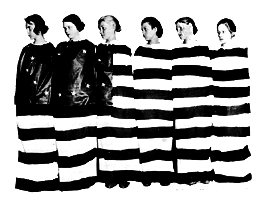
GISW
GLOBAL INSTITUTE OF SOCIAL WORK

Board of Directors and Volunteers at the GISW AGM 2016: Back row (LtoR): Terence Yow, Sim Gim Guan, Tan Ngoh Tiong, David Ong, Vicky Tan, Koh Juat Muay. Front Row: S. Vasoo, Ang Bee Lian, Arthur Tan, Elena Lui, Teo Mui Wan

CSD2015 Conference: Opening Plenary with Keynote Speaker Dr Noeleen Heyzer and Guest of Honour: DPM Tharman Shanmugaratnam

The International Federation of Social Workers is holding a competition to design the 2017 World Social Work Day Poster. The competition is open to anyone including people that use social work services, students, social workers and any one else.

Board of Directors and Volunteers at the GISW AGM 2016: Back row (LtoR): Terence Yow, Sim Gim Guan, Tan Ngoh Tiong, David Ong, Vicky Tan, Koh Juat Muay. Front Row: S. Vasoo, Ang Bee Lian, Arthur Tan, Elena Lui, Teo Mui Wan
Vision &
Mission
The vision of The Global Institute of Social Work (GISW) is to deliver quality social work training wherever in the world it is needed the most. Our goal is to provide readily available, cost-effective, and culturally appropriate training in various fields of social work.
1860-1900
The Friendly Visitor
The introduction of the friendly visitor into the charity organization mix was a decisive innovation in the development of early social work. The friendly visitor was herself (they were always women) an interesting blend of beliefs and values representing conservative economics, an upper-class lifestyle, social Darwinism, Christian love, and good intentions. Seeking to follow scientific principles as they were then understood, the visitors would first study and investigate relief applications, separate the recipients into deserving or undeserving classes and then treat them by making referrals and providing them with friendship.
The assumption that the poor were in need of upper-class role models to assist in their "moral uplift" rather than decent wages and safe housing, was so widely accepted by most Americans that it severely restricted society's view of the poor and their needs for several decades. Interestingly, there were few qualms expressed at the time over the use of untrained volunteers to fill the role of the visitor. In fact, it was assumed that the high status and station held by most volunteers made them preferable to trained and paid professionals. Volunteers, went the thinking of the times, were able to contribute a level of enthusiasm and Christian charity that professionals lacked.
The realities of the friendly visitor were filled with contradictions and pitfalls. At their best, friendly visitors were well intentioned advice-givers. At their worst, friendly visitors were emissaries of a mean-spirited and self-serving view towards the poor that blamed them for circumstances that were often beyond their control.
Often paternalistic, the friendly visitor represents a model that the social work profession has repeatedly, and not entirely successfully, tried to purge from its image for over a hundred years. In spite of their flaws, friendly visitors were among the nation's first social workers and made important contributions to the development of professional social work.
Contributions of the Friendly Visitor
In spite of the influence of the state boards, charity work in the 1870s was still closely associated with religion. The rules of friendly visiting as promulgated through the charity organization societies, further promoted secularism in charity work. Friendly visitors helped establish important cornerstones of the profession of social work by prohibiting proselytization or discrimination due to politics, religion or nationality.
Friendly visiting put many members of the upper classes in close proximity with the other classes. This familiarity often forced them to confront situations where such broad factors as exploitive working conditions and industrial injury were more often to blame for poverty than character flaws or lack of morals. Some visitors began to see that poverty was a far more complex problem than they had been led to believe. Consequently, they began to seek broader and more flexible techniques than advice and moral uplift.
Finally, the total reliance of the friendly visiting movement on untrained volunteers led to a recognition that effective visiting required more than upper-class status, a successful husband and a Christian heart. Slowly but surely, charity workers became convinced that effective visiting required a cadre of workers who were trained and paid professionals.

A portrait of a social worker with two of her charges.

A Victorian Woman

Orphans celebrate the Fourth of July

A New York City Orphanage around 1870
Adapted from socialworkhistorystation.org
Special thanks to the late Professor Dan Huff and Boise State University School of Social Work